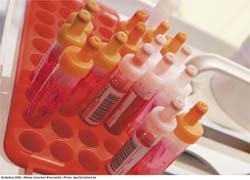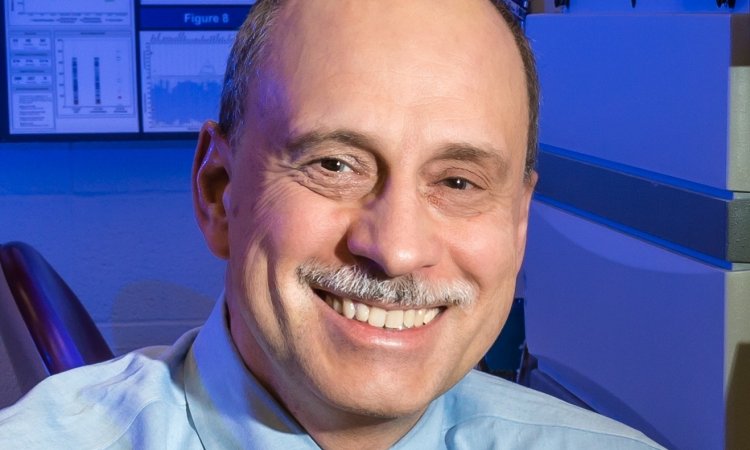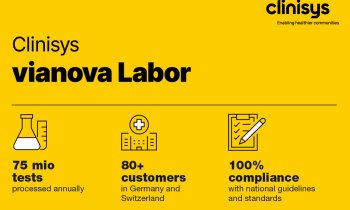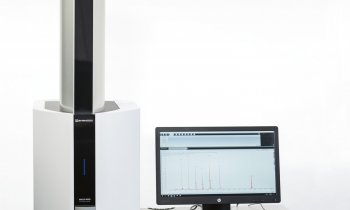analytica comes of age
21st in Munich in 2008
21st. Analytica 2008 held in april 2008 in Munich, Germany.

In the five halls of this international fair for instrumental analysis, laboratory technology and biotechnology lab workers will find just about everything they need. With three main exhibition categories – laboratory technology, analysis and quality control; life sciences and diagnostics for the laboratory sector – the event draws around 1,000 exhibitors (in just the biotech area there will be around 400). A few highlights will be sections dealing with nanotechnology, personalised medicine and biochips.
Personalised medicine – The effect of many medications varies from person to person. Molecular-biological diagnostics makes it possible to tailor therapies to patients’ genetic profiles and modify medication dosages to suit an individual’s metabolism. The show will focus on bio-analysis and diagnostics procedures that promise to make customised therapies possible.
Biochips – Personalised medicine revolves around DNA chips. A micro-array from Eppendorf, for example, will allow physicians to determine whether a patient should undergo radiation or chemotherapy after a lumpectomy – and which patients can skip those treatments. The breast-cancer chip has more than 200 genes that identify the type and stage of a tumour.
Biochips can also be used to improve AIDS therapy. In this case, the virus’ ability to change is problematic because it can make active ingredients less effective. Biochips identify the types of resistan-ces by analyzing the virus’ genome. Medications that would be ineffective are not even considered.
Roche also has a gene chip that makes it easier to choose the optimum medication in the right dose. Its AmpliChip CYP 450 is now licensed for diagnostic purposes in the USA and Europe.
Genetic diagnostics is still reserved for specialised laboratories. However, as analytica promises to show, chip technology is becoming more user friendly. Detection kits with ready-to-use reagents, all-in-one concepts consisting of micro-arrays, hybridisation stations, scanners and analysis software as well as ongoing advancements in automation are making it easier for chip technology to be incorporated into routine clinical applications. Costs must also be considered, and there are already attractive alternatives to common fluorescence scanners; these detect hybridisation electrochemically or by precipitating silver onto gold nanoparticles
Identifying minor genetic defects
The fact that patients react differently to a given therapy despite a 99.9% genetic match is frequently due to single-nucleotide polymorphisms (SNPs, pronounced snips). A SNP is a minor defect in the script of the genetic mapping. Only a single letter, i.e. a base, is interchanged. Experts assume that there are ten million SNPs in the human genome. In many cases, SNPs are the cause of diseases.
The NGFN (Germany’s National Genome Research Network), a group of researchers working in various fields, wants to use DNA chips to examine 25,000 patients and control people. Scientists want to identify the genetic causes of obesity, Alzheimer’s, neurodermatitis, schizophrenia, tuberculosis and many other diseases.
Peter Nürnberg, Professor of Genomics at Cologne University and coordinator of the genotyping platform at the NGFN, and his colleagues, will collect over 20,000 individual samples. There are more than a half-million SNPs and other gene variations on the chips they use.
Such large-scale projects are only possible using state-of-the-art bio-analysis, molecular-biology and information-technology tools, and the latest of these – e.g. micro-array scanners with integrated barcode readers, and expanded bioinformatics software for analyzing and storing enormous quantities of data – will be at the Munich event.
Cost cutting
Protein chips are increasingly used to ascertain which genetic products, i.e. which proteins, actually affect a cell. Decoding proteins gives pharmacy researchers a point of departure for new active ingredients. Biomarker tests, which filter out unsuitable active-ingredient candidates before they are tested on patients, also help companies to cut costs considerably. Pharmaceutical companies also profit from the trend towards personalised medicine in another way: some blockbuster medications would still be on the market today if the patients who tend to have bad reactions for genetic reasons had been filtered out and treated using other alternatives.
Automation – Laboratory robotics, IT and efficient new analysis techniques are giving rise to large contract laboratories that can process customers’ orders quickly and flexibly, the analytica organisers emphasise. ‘An example in the biotechnology sector is PCR analysis: the latest techniques have made it possible for laboratories to work twice as quickly, resulting in a multitude of applications in infection diagnostics and food analysis.’
The Innovations Area – Alongside leading manufacturers, research institutes and small innovative companies are pushing progress, so analytica has created a section for start-up companies, university spin-offs, founder centres and research institutes to present their ideas to industry and a broad-based audience of specialists. They can book space to present their concepts, and utilise a Technology and Innovations Forum to further discuss innovations.
New: Education courses – For the first time analytica will hold education and training events for laboratory workers, as well as an Executive Roundtable where managers can discuss trends and topics in an auditorium with an audience of professionals.
The analytica Conference has long been a summit for cutting-edge research, and again there will be Job Day, and the analytica Forum – for 2008, renamed the Business & Markets Forum – which will feature presentations and panel discussions on economic-policy and business topics.
In 2008, about 30,000 visitors are expected – about a third of these from countries beyond Germany.
Details: www.analytica.de
31.08.2007











